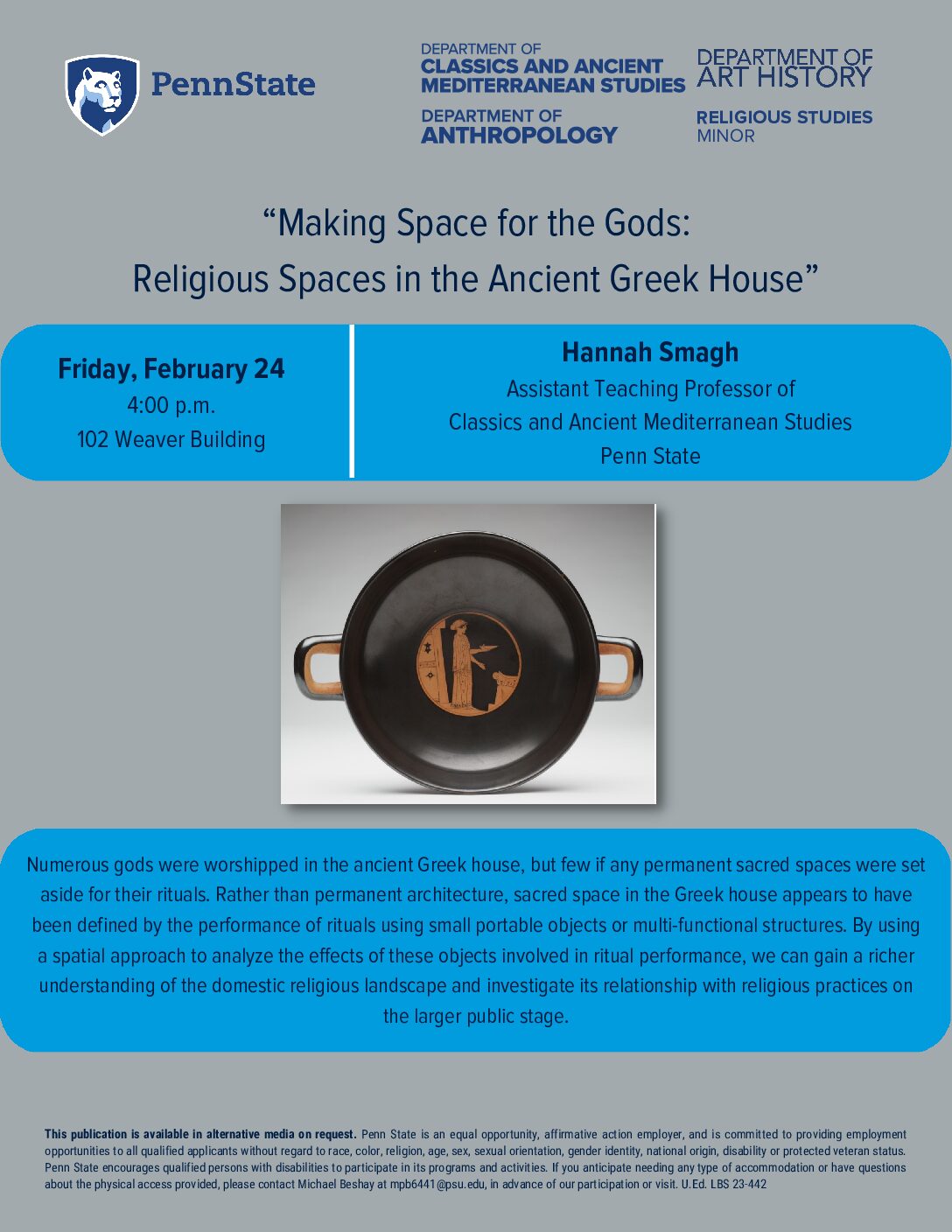February 24, 2023
4:00 pm
Weaver 102 and on Zoom
Abstract: Numerous gods were worshipped in the ancient Greek house, but few if any permanent sacred spaces were set aside for their rituals. Rather than permanent architecture, sacred space in the Greek house appears to have been defined by the performance of rituals using small portable objects or multi-functional structures. By using a spatial approach to analyze the effects of these objects involved in ritual performance, we can gain a richer understanding of the domestic religious landscape and investigate its relationship with religious practices on the larger public stage.
Hannah Smagh is assistant teaching professor of Classics and Ancient Mediterranean studies at Penn State.
The lecture will be held in person in 102 Weaver Building.
